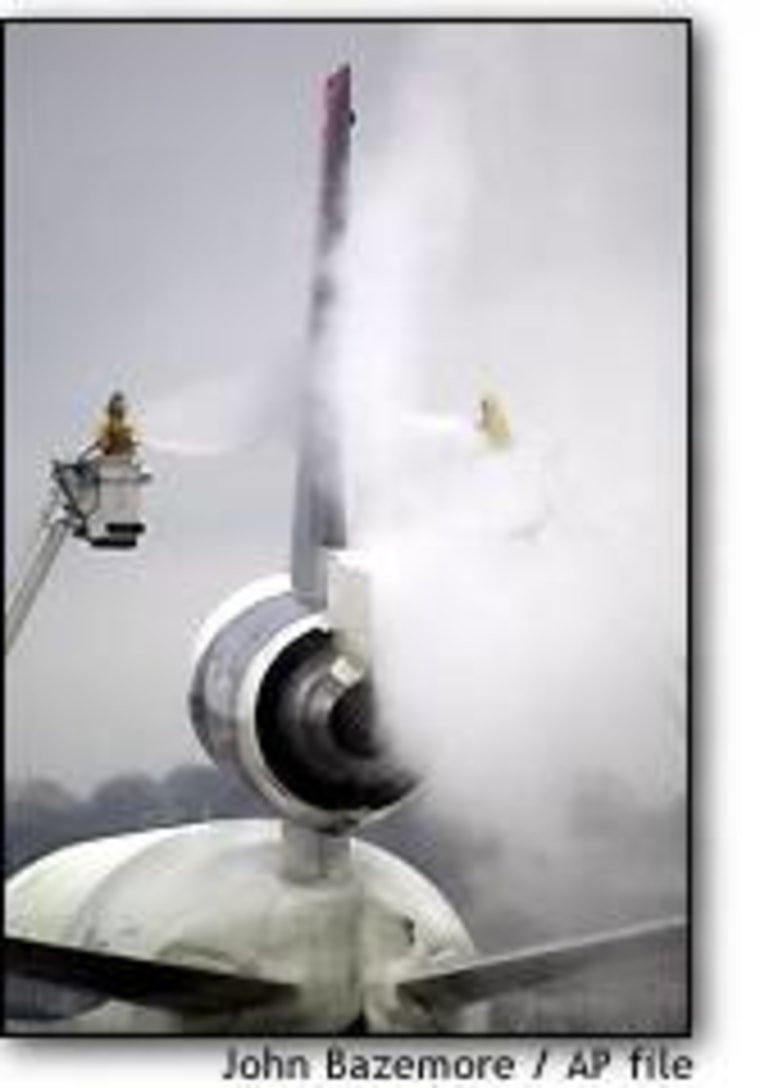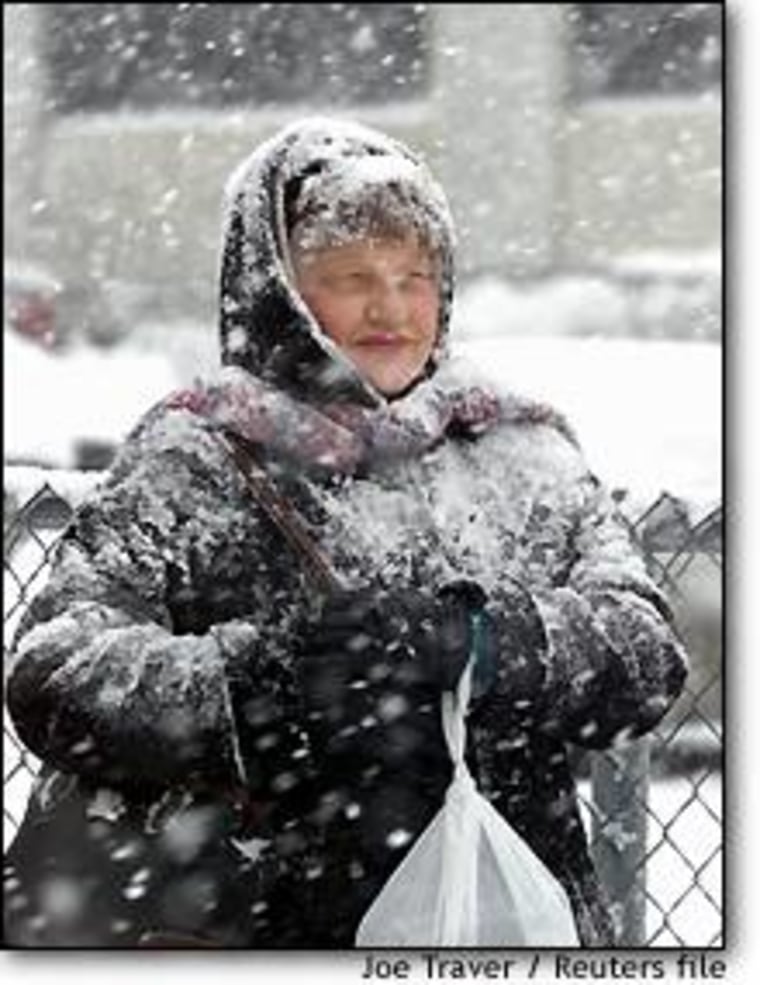How fast does snow fall? If you’re a kid hoping for a day off from school, or a ski resort operator ... not fast enough. If you’re a cab driver or snowplow operator ... too fast. If you’re Nolan Doesken, it doesn’t matter. It’s just fun to try to figure it out.
Doesken is the assistant climatologist for the state of Colorado and author of “The Snow Booklet.” When he talks about snow, there’s as much of a twinkle in his voice as there is in the shiny flakes of fresh snow on a sunlit field. He loves the stuff.
“The really rimed crystals can buzz right along like a blur,” he says, at a lightning-fast 9 mph. “A nice little stellar crystal, the favorite magical snowflake with the arms that everybody draws, will float down more gently,” at a mere 1.5 mph.
How does he know? While you and I are out sledding, skiing or shoveling, Doesken and his fellow flake freaks are photographing falling flakes, factoring in wind conditions and figuring out how fast snow falls.
So what’s this “rimed crystal” he’s talking about? That’s a snowflake that has picked up one or more tiny particles of supercooled water on its way down. Supercooled water is colder than 32 degrees Fahrenheit, but not yet frozen. If it’s really pure and doesn’t have any imperfections to serve as nuclei for condensation, water can get down to temperatures as low as 40 degrees below zero Fahrenheit before freezing.
Doesken says that in clouds, supercooled droplets often occur at temperatures of 10 to 15 degrees Fahrenheit. But when a snowflake bumps into them during its descent, those droplets attach to the crystal and freeze. That kind of ice is called rime. The more rime that freezes onto a snowflake as it drops, the heavier the flake is and the faster it falls.
It’s still not sleet or hail, which are bigger, more solid pellets of ice. It’s still a snowflake crystal, with a kind of a crust frozen on.
“When it hits you, it doesn’t sting,” Doesken says. “It feels like a snowflake with momentum. Because it’s still a crystal, whether it’s a dendrite, a column, a plate, or a stellar crystal (the various basic types of snowflakes), it still has enough surface area to fall more like a parachute than a bomb.
“East Coast storms are usually heavily rimed, with high fall velocities,” Doesken adds. “Your snow in New England isn’t so much drifting down as high-tailing it down.” That’s because the air that brings snow to the East Coast is rich in moisture compared with snow clouds elsewhere.
Snowflakes can’t fall faster because of what’s known as terminal velocity. That’s when the force of atmospheric resistance pushing up against the object, determined by its surface area, balances the gravitational force pulling the object down, determined by its weight. At terminal velocity the object stops accelerating, and falls the rest of the way at the same speed.
How de-icing occurs
Terminal velocity is the speed at which some folks at airports have to work in order to keep planes operating while the snow is falling. That goes not only for the plow operators who keep the runways clear, but also for the people who de-ice the planes so they can fly ... which planes can’t do if they have snow and ice all over their wings.

But there’s more to it than de-icing. That’s just step one. Step two is anti-icing, to keep the frozen stuff they just washed off from building back up as the plane sits in the snow/sleet/freezing rain/freezing fog, waiting to take off.
Both steps use fluids that contain glycols, chemicals that have a lower freezing point than water.
De-icers use either ethylene glycol or propylene glycol in a 50-50 mix with water, heated to 180 degrees Fahrenheit, and sprayed from a power hose onto the plane. The heat and powerful spray do some of the de-icing work. But the key is those glycols, which reduce freezing points to as low as 60 degrees below zero Fahrenheit.
After spraying the de-icing fluid on the plane, the “holdover time” during which the plane stays clean is only six to 15 minutes, depending on weather conditions. So sometimes they do the second step, called anti-icing, in which they spray the plane with a mix of glycol and other substances called non-Newtonian fluids. That’s just a fancy name for fluids too thick to run by themselves. Ketchup and honey, for example, are non-Newtonian fluids.
The thicker fluid stays on the plane longer and lets the glycols keep things from refreezing while the plane is waiting. Holdover time after a step-two anti-ice “treatment” can be as much as 80 minutes, depending on the specific fluid used and the weather conditions. Usually they spray the thicker stuff only on the critical control surfaces of the plane: the wings — which are colder because they have the fuel tanks inside — and the tail.
Non-Newtonian fluids designed for anti-icing have special advantages over ketchup or honey. They have the unique ability to change viscosity when confronted with aerodynamic forces acting on the fluid. When the plane speeds up for takeoff, the force of the wind on the fluid makes it get thinner, and it drips right off the plane. By the time the plane passes 130 knots, the fluid is gone, the plane’s surface is clean, and takeoff — at speeds of 150 to 180 knots for your average jetliner — is completely safe.
By the way, you can tell the de-icers and the anti-icers apart by their color. The step-one fluids are pinkish. The step-two fluids are greenish.
Perhaps you’ve heard questions raised about the environmental impact of airplane de-icing and anti-icing fluids. It’s true that glycols consume oxygen when they get into aquatic ecosystems — oxygen required by the critters living in the water. But these fluids biodegrade quickly. In five days, they’re 70 percent gone. After 20 days, they’re 96 percent gone.
David Ropeik is a longtime science journalist and currently serves as Director of Risk Communication at the Harvard Center for Risk Analysis. This article was adapted from material previously published in Ropeik’s “How and Why” columns.
